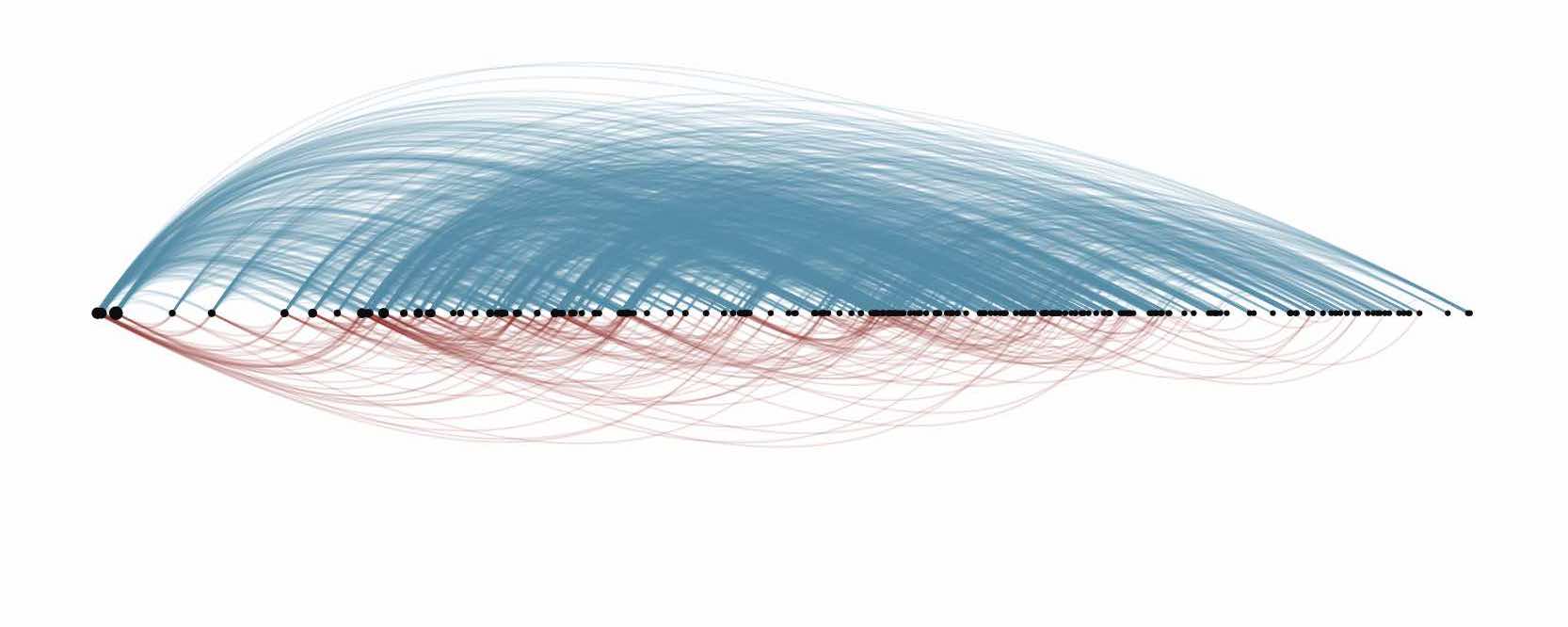
Linear hierarchy diagram with nodes embedded at their inferred SpringRank scores. Blue edges point down the hierarchy and red edges point up. Nodes on the left are higher ranked.
The elements of an interacting system are often affected by hidden hierarchies which might play a role in determining the interaction patterns that we observe between them. A relevant problem in this context is how is a global hierarchy of individuals being capable of reproducing the pairwise interaction patterns that we observe and how can we find it. But sometimes the hierarchy that one observes might be resulting from random chance rather than an actual underlying pattern induced by the observed topology, therefore one other relevant problem is to be able to distinguish between these two cases and find limits in inferring this structure. Finding an hierarchy structure and assessing its stability can allow to act on the network, for instance by redistributing resources as certain nodes become more or less important. Relevant examples are found in networks of influence in organizations, ecological networks of animals fighting each others in pairs, or hiring dynamics in job networks.
